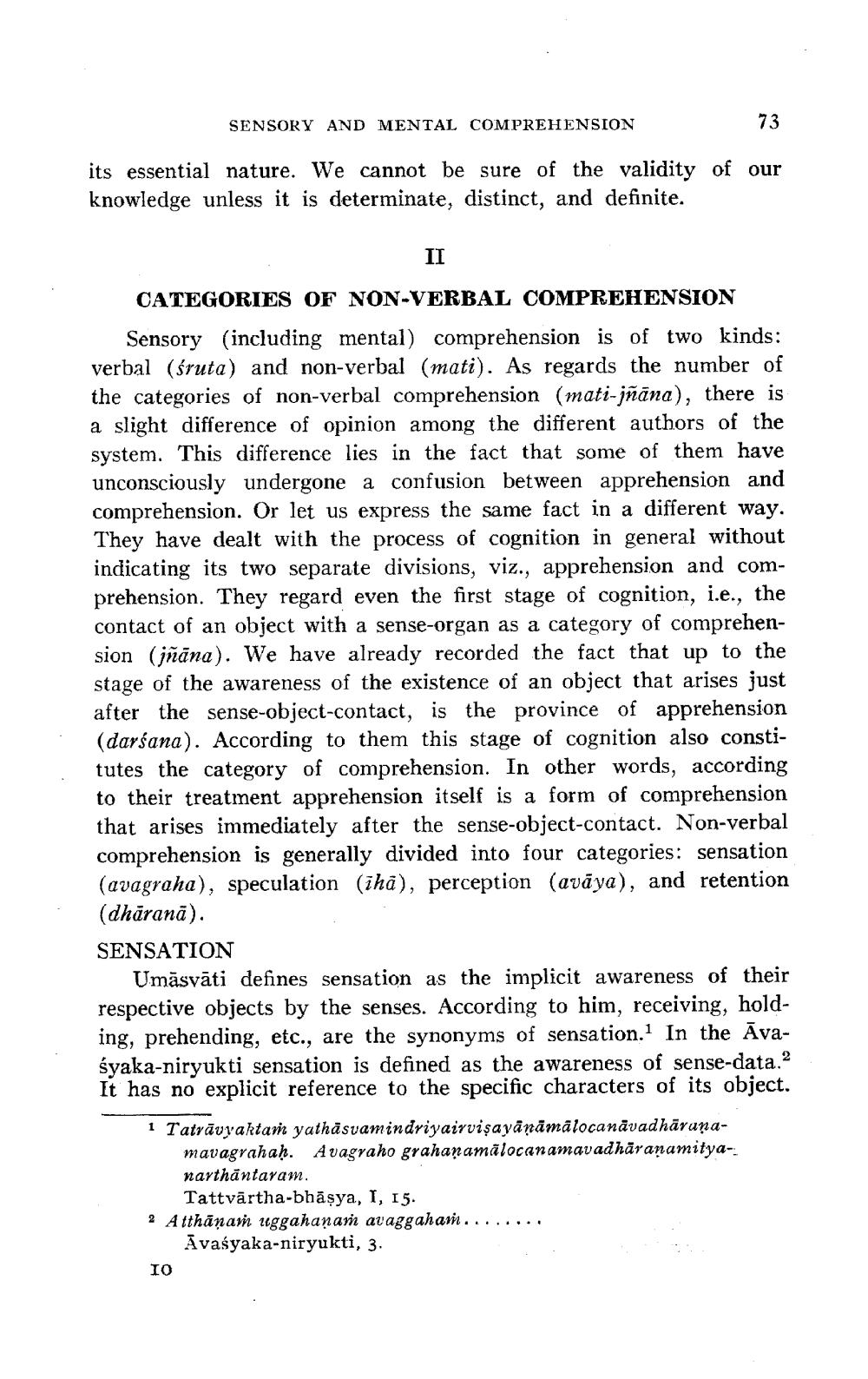________________
SENSORY AND MENTAL COMPREHENSION
73
its essential nature. We cannot be sure of the validity of our knowledge unless it is determinate, distinct, and definite.
II CATEGORIES OF NON-VERBAL COMPREHENSION
Sensory (including mental) comprehension is of two kinds: verbal (śruta) and non-verbal (mati). As regards the number of the categories of non-verbal comprehension (mati-jñāna), there is a slight difference of opinion among the different authors of the system. This difference lies in the fact that some of them have unconsciously undergone a confusion between apprehension and comprehension. Or let us express the same fact in a different way. They have dealt with the process of cognition in general without indicating its two separate divisions, viz., apprehension and comprehension. They regard even the first stage of cognition, i.e., the contact of an object with a sense-organ as a category of comprehension (jñāna). We have already recorded the fact that up to the stage of the awareness of the existence of an object that arises just after the sense-object-contact, is the province of apprehension (darśana). According to them this stage of cognition also constitutes the category of comprehension. In other words, according to their treatment apprehension itself is a form of comprehension that arises immediately after the sense-object-contact. Non-verbal comprehension is generally divided into four categories: sensation (avagraha), speculation (iha), perception (avāya), and retention (dhāranā). SENSATION
Umāsvāti defines sensation as the implicit awareness of their respective objects by the senses. According to him, receiving, holding, prehending, etc., are the synonyms of sensation. In the Avaśyaka-niryukti sensation is defined as the awareness of sense-data.? It has no explicit reference to the specific characters of its object. 1 Tatrāvyaktam yathāsvamindriyairvişayānāmālocanävadhārana
mavagrahaḥ. Avagraho grahanamalocanamavadhāranamitya-.. narthāntaram.
Tattvārtha-bhāșya, I, 15. 2 Atthānam uggahanan avaggaham......
Āvaśyaka-niryukti, 3. IO




